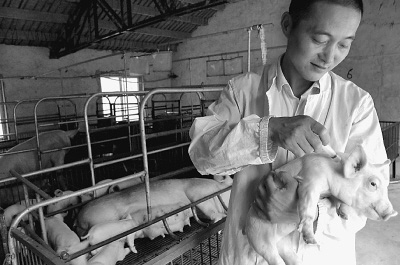An official with the Ministry of Agriculture on Monday dismissed allegations that blue-ear pig disease had spread from China to Vietnam and Myanmar.
"It is groundless to say China has transmitted the disease to the two countries," Li Jinxiang, a veterinarian with the Ministry of Agriculture, said at a press conference.
Li said he had heard the disease had occurred in eastern and central parts of Vietnam from his Vietnamese counterparts, but the WOAH (World Organization for Animal Health) had not reported the epidemic on its website.
Meanwhile Myanmar has yet to officially confirm the outbreak of the disease, he said.
"The disease, also called PRRS (Porcine Reproductive and Respiratory Syndrome), was first recognized in the United States in 1987 and spread to Canada, German and Netherlands in the following four years," said Li.
"Currently, the disease exists in major pig-raising countries in the world," he said.
He said China had notified international organizations including WOAH and the Food and Agriculture Organization of the United Nations of the DNA sequences of the virus and the epidemics.
Li also assured the press that China's agriculture ministry is responsible and would inform the public of all potential epidemics in a timely fashion.
Since the beginning of 2007, the blue-ear pig disease has plagued 294 Chinese counties and infected 292,000 pigs, of which 77,000 died. The ministry has administered 510 million milliliters of vaccines to immunize more than 200 million pigs.
In a separate case concerning the death of vaccinated poultry in south China's Guangdong Province, Li insisted the vaccines were effective, arguing vaccines were yet to develop any antibodies in the ducklings.
"Those ducklings were raised for only a dozen days or so, while it usually takes two to three weeks for ducklings to develop antibodies," said Li.
"Vaccinating fowls is a complex process," he said.
Last Monday, the ministry confirmed a bird flu outbreak in Guangzhou, which began with the mass deaths of ducks on September 5.
The outbreak was confirmed as a sub-type of H5N1 bird flu by the National Avian Influenza Reference Laboratory.
A total of 36,130 ducks had been culled as of September 17, after farmers in Sixian Village and Xinzao Township in the Panyu district of Guangzhou reported the deaths of ducks on September 5.
(Xinhua News Agency September 25, 2007)



